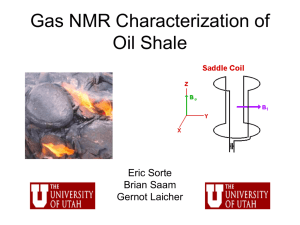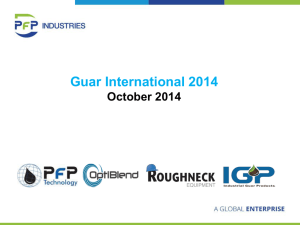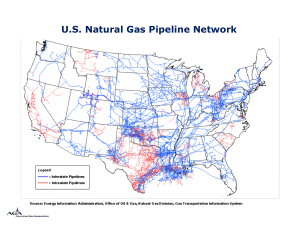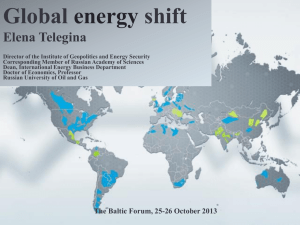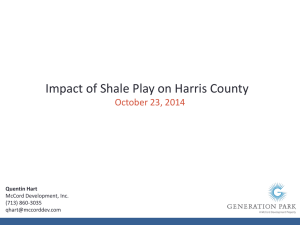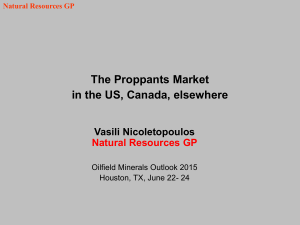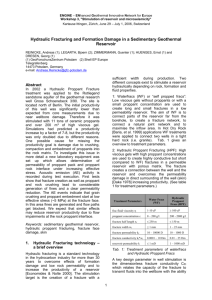Click here - DFNE 2014
advertisement
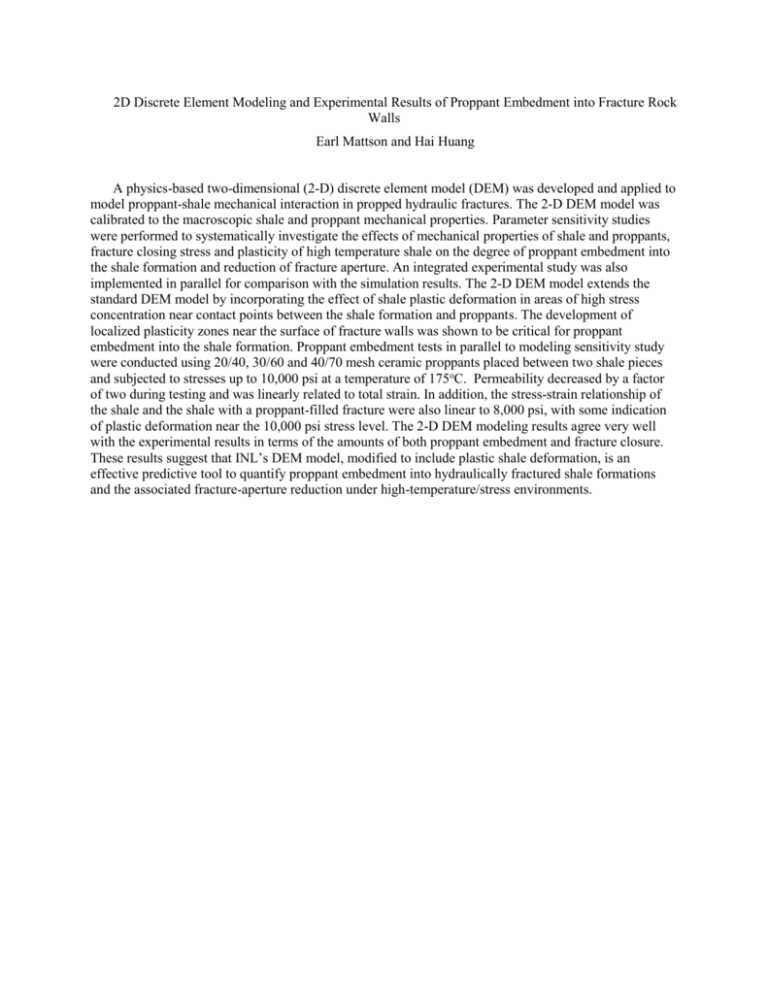
2D Discrete Element Modeling and Experimental Results of Proppant Embedment into Fracture Rock Walls Earl Mattson and Hai Huang A physics-based two-dimensional (2-D) discrete element model (DEM) was developed and applied to model proppant-shale mechanical interaction in propped hydraulic fractures. The 2-D DEM model was calibrated to the macroscopic shale and proppant mechanical properties. Parameter sensitivity studies were performed to systematically investigate the effects of mechanical properties of shale and proppants, fracture closing stress and plasticity of high temperature shale on the degree of proppant embedment into the shale formation and reduction of fracture aperture. An integrated experimental study was also implemented in parallel for comparison with the simulation results. The 2-D DEM model extends the standard DEM model by incorporating the effect of shale plastic deformation in areas of high stress concentration near contact points between the shale formation and proppants. The development of localized plasticity zones near the surface of fracture walls was shown to be critical for proppant embedment into the shale formation. Proppant embedment tests in parallel to modeling sensitivity study were conducted using 20/40, 30/60 and 40/70 mesh ceramic proppants placed between two shale pieces and subjected to stresses up to 10,000 psi at a temperature of 175oC. Permeability decreased by a factor of two during testing and was linearly related to total strain. In addition, the stress-strain relationship of the shale and the shale with a proppant-filled fracture were also linear to 8,000 psi, with some indication of plastic deformation near the 10,000 psi stress level. The 2-D DEM modeling results agree very well with the experimental results in terms of the amounts of both proppant embedment and fracture closure. These results suggest that INL’s DEM model, modified to include plastic shale deformation, is an effective predictive tool to quantify proppant embedment into hydraulically fractured shale formations and the associated fracture-aperture reduction under high-temperature/stress environments.



